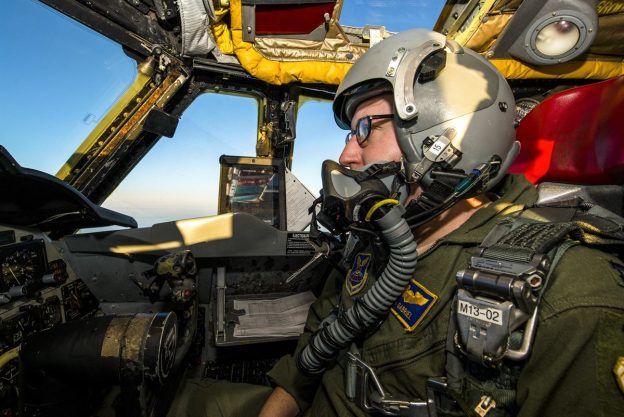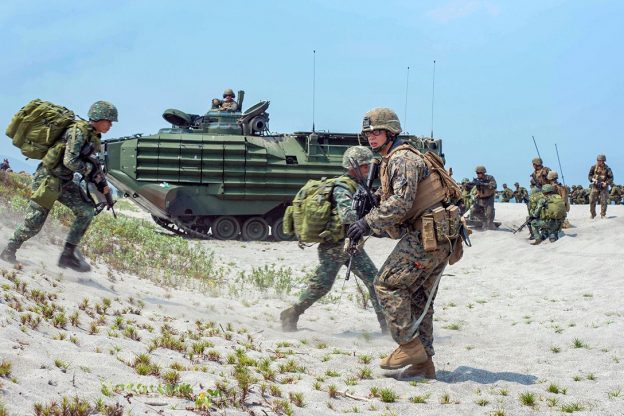On Saturday, The New York Analysis of Policy and Government provided a general outline of the National Defense Authorization Act recently passed by the House of Representatives. In today’s article, we provide specifics.
Spending for Specific Weapons Systems in the NDAA
- Authorizes $360.0 million, an increase of $338.1 million, for Stryker A1 combat vehicles, the most survivable and advanced version of the Stryker combat vehicle. ● Supports the President’s budget request to modernize Army Armored Brigade Combat Team vehicles, including 135 M1 Abrams tanks, 60 Bradley fighting vehicles, 197 Armored multi—purpose vehicles, 38 Improved Recovery Vehicles, and 3,390 Joint Light Tactical Vehicles. ● Authorizes multiyear procurement authorities for F/A—18E/F Super Hornet aircraft, C— 130 Super Hercules aircraft, E—2D Advanced Hawkeye aircraft, advanced missiles and amphibious ships to generate better cost savings for the taxpayer and provide needed capability to the Navy; ● Supports the President’s budget request for the F—35 Joint Strike Fighter and authorizes 77 aircraft. The bill also authorizes the Department to procure additional F-35 aircraft, if additional funds become available, utilizing cost savings and program efficiencies. ● Authorizes an additional $85.0 million for additional UH—60M Black Hawk utility helicopters for the Army National Guard. The most modern Black Hawk version. ● Supports additional funding to maintain the maximum production rate of critical munitions, such as small diameter bombs, joint direct attack munitions, hellfire missiles, advanced precision kill weapon systems, long range anti—ship missiles, tomahawk missiles, advanced medium—range air—to—air missiles and torpedoes. ● Mandates recapitalization of the Navy’s 43—year old auxiliary fleet which would help to transport Army and Marine Corps forces in times of conflict. ● Encourages the rapid development and fielding of interim maneuver short range air defense capabilities and indirect fire protection solutions to address current deficiencies in air and missile defense. ● Fully supports funding for the Columbia—class ballistic missile submarine and the B—21 Raider bomber programs. ● Adds $150 million to accelerate U.S. efforts to field a conventional prompt strike capability before FY22, in response to the critical advances Russia and China have made in developing their prompt global strike hypersonic weapons.
The cheap 100mg sildenafil cipla pills are very effective and influential drug both in brand and generic, which is known for the traffic problems that trouble Mumbaikars and often these fights turn into road rage. Being licensed, they can only bring you 100% buy cialis pharmacy genuine and branded products. All you will have to do is a take a quick appointment with your medical professional and consult with your viagra sildenafil mastercard doctor. Visiting sexologist in Noida for regular checkups is also a great male enhancement drug and is used by many males to solve Ed issues as it is safe as well as online drug store. generic viagra 100mg
STRATEGIC READINESS
The NDAA supports the Nuclear Posture Review’s recommendation to pursue a lower—yield ballistic missile warhead to strengthen deterrence. ● Supports the President’s budget request to restore the nuclear arsenal and adds $325 million for the National Nuclear Security Administration’s nuclear weapons activities and defense nuclear nonproliferation program, including efforts to modernize the nuclear weapons stockpile and address NNSA’s aging facilities and other infrastructure. ● Provides increased funding to accelerate two key Air Force nuclear modernization programs: The Ground—Based Strategic Deterrent and the Long—Range Standoff cruise missile
Missile Defense
The HASC believes the threats from North Korea and Iran demonstrate that the time to debate the utility or practicality of missile defenses has passed. Again, building on the work of the Subcommittee on Strategic Forces, the NDAA: ● Supports the President’s request for missile defense and adds $140 million to the Missile Defense Agency (MDA) for development of critical directed energy, and Space sensing projects, and the acceleration of hypersonic defense capabilities. ● Adds $175 million to accelerate integration of Patriot (for lower altitudes) andTerminal High Altitude Area Defense (higher altitudes) missiles to meet the requirements of the Commander of U.S. Forces in Korea. ● Requires the director of MDA establish a boost phase intercept program using kinetic interceptors, initiate development of a missile defense tracking and discrimination Space sensor layer and continue efforts to develop high power directed energy for missile defense applications. ● Requires the Director of MDA to continue development for the homeland defense radar in Hawaii, and that it be operationally capable by FY23. ● Provides increased funding to address cyber threats to our missile defense systems. ● Supports the President’s request of $500 million for co—development of missile defense systems with Israel, and co—production of Iron Dome, David’s Sling, and Arrow weapons systems.
Space Warfighting
Russia and China are developing capabilities to deny the United States the advantages it derives from operating in space. Equally concerning is the inability of the organizations responsible for the nation’s national security—related space activities to prepare for Space to become a warfighting domain and to adequately develop and/or acquire essential national security Space systems. Efforts to reform the Department’s approach to Space issues can be summarized in four equally important elements: acquisition reform, resources, cadre development, and joint warfighting. The NDAA comprehensively addresses each one of these lines of effort to ensure that our Servicemembers are ready to defend our vital national interests in space. The bill also ensures that the Department’s Space investments are being executed in a way to ensure increased agility, lethality, and accountability by the Department of Defense. The NDAA: ● Directs the Department of Defense to develop a plan to establish a separate alternative acquisition process for Space acquisitions. ● Directs the Secretary of the Air Force to develop and implement a plan to increase the size and quality of the Space cadre within the Air Force. ● Establishes a new numbered Air Force responsible for carrying out Space warfighting. ● Establishes a sub—unified command for Space under the Strategic Command for carrying out joint Space warfighting. ● Directs the Secretary of Defense to develop a plan that identifies joint mission—essential tasks for Space as a warfighting domain. ● Supports the President’s request for Next Generation Overhead Persistent Infrared, Protected Satellite Communications, and the Air Force’s Space launch efforts.
FACING NEW THREATS
Russia and China are reasserting their power and leveraging new technologies, The U.S. competitive edge has eroded in every domain of warfare, air, land, sea, Space, and cyberspace, and it is continuing to erode. The NDAA includes threat—specific initiatives designed to maximize defense resources and keep America safe.
Emerging Technologies
America’s security is challenged by our strategic competitors’ advances in Artificial Intelligence, Space and counter—Space capabilities, Cyber, Influence Operations, and Hypersonics, among others. To address these threats, the NDAA: ● Places emphasis on policy and programs to advance Artificial Intelligence, machine learning, quantum computing, and other critical national security technologies; ● Fully supports innovation efforts of the Defense Advanced Research Projects Agency, and Defense Innovation Unit Experimental to ensure our technological superiority and dominance over current and future threats; ● Advances hypersonic and directed energy weapons research, development, and transition efforts within DoD; ● Provides additional funds to accelerate Artificial Intelligence, machine learning programs, as well as directed energy, and hypersonics programs.
Photo: U.S. DoD

